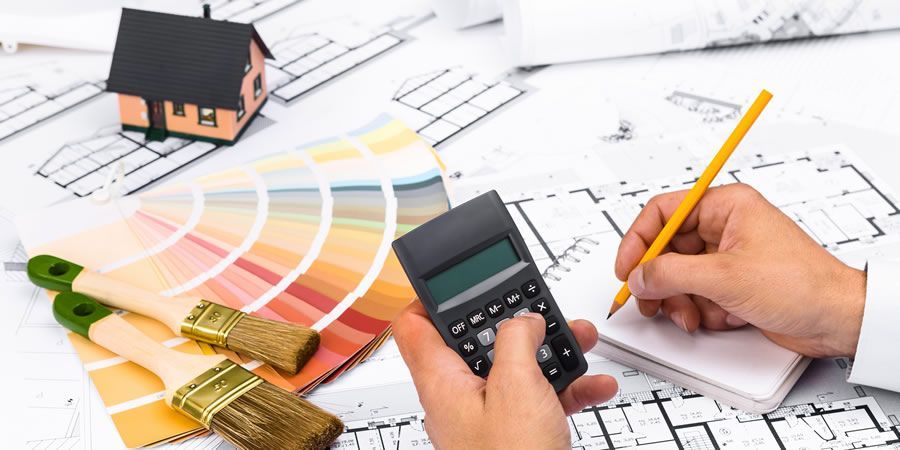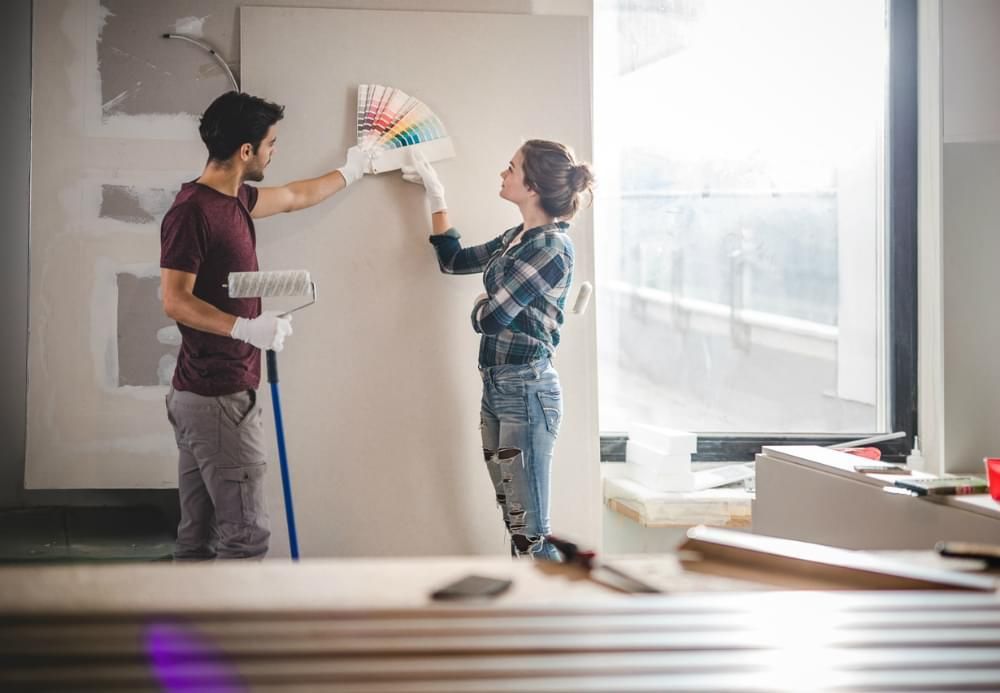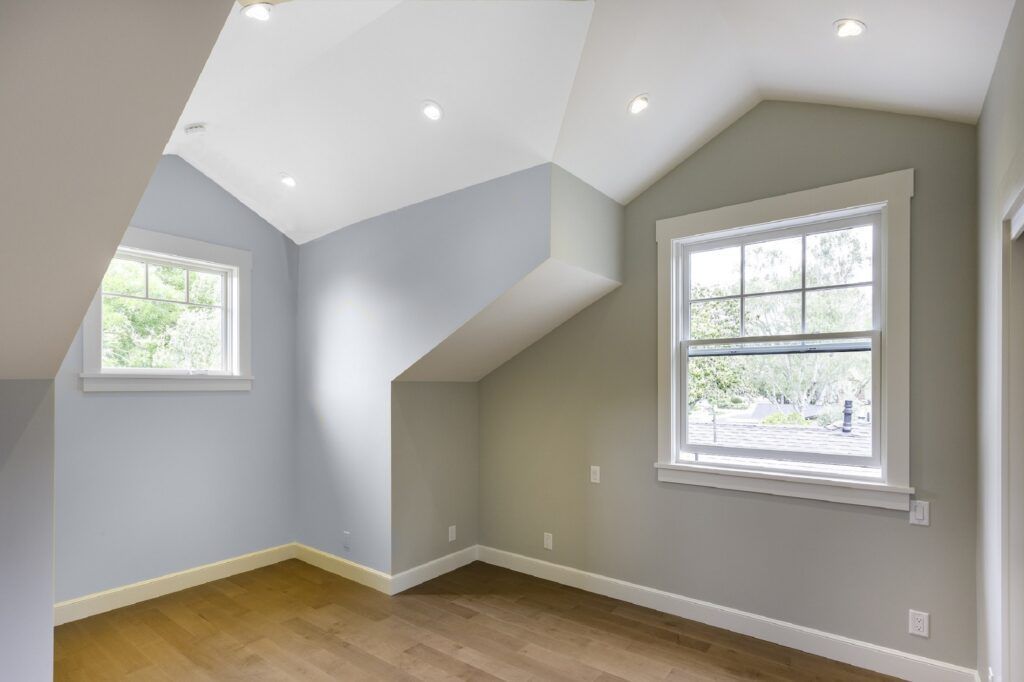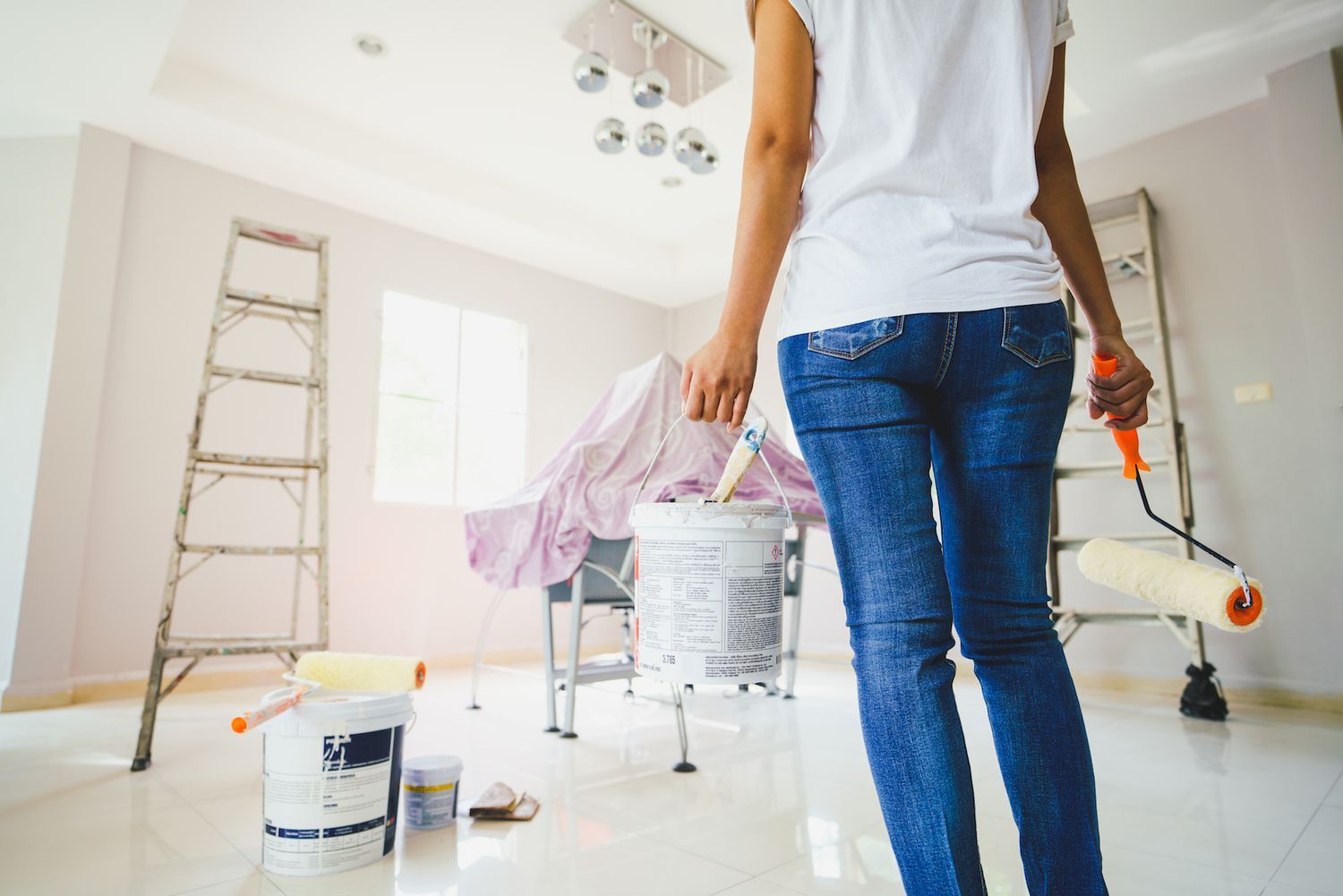Available Now
How to Estimate the Cost of Painting a House Interior
How to Estimate the Cost of Painting a House Interior

To estimate interior painting costs, measure your space, choose paint wisely, consider labor, and add extra expenses. Room size and hiring pros vs. DIY impact costs.
Accurate cost estimation is crucial for successful interior painting projects.- Key cost factors: square footage, paint type, labor, and prep work.
- Calculate costs by measuring space, selecting paint, factoring labor, and including extra expenses.
- Practical tips: visit the site, research paint prices, calculate labor, consider overhead, and room size matters.
- Weigh hiring pros vs. DIY, stay updated on cost trends, and creatively use leftover paint.
Introduction
Painting the interior of your house can be a transformative and rewarding home improvement project. However, before you embark on this journey, it's crucial to understand how to estimate the cost of painting a house interior. Accurate cost estimation ensures that you budget appropriately, avoid financial surprises, and get the results you desire. In this comprehensive guide, I will walk you through every step of the process, providing detailed insights for beginners and seasoned DIY enthusiasts alike.
Factors Affecting Interior Painting Costs

Before we delve into the nitty-gritty of estimating costs, it's essential to grasp the factors that influence the overall price of painting the interior of your home. Let's break down these key elements:
1. Square Footage
The size of the area you intend to paint is perhaps the most significant factor in determining your costs. Larger rooms or homes require more paint, more labor, and more time. To calculate the square footage, measure the length and width of each room and then multiply these measurements. Don't forget to subtract the square footage of doors and windows as you won't be painting these surfaces.
2. Paint Type and Quality
The type and quality of paint you choose significantly impact the final cost. There are various paint options available, including:
- Latex Paint: Water-based, easy to clean, and dries quickly.
- Oil-Based Paint: Durable and excellent for high-traffic areas but takes longer to dry.
- High-Quality Paint: Costs more initially but often requires fewer coats and lasts longer, making it cost-effective over time.
- Specialty Paints: Some rooms may require specialized paints, like moisture-resistant paint for bathrooms or stain-blocking paint for covering imperfections.
3. Labor Costs
Labor costs can vary based on whether you hire professionals or decide to tackle the project yourself. Professional painters typically charge by the hour or provide a fixed price for the entire job. Keep in mind that experienced painters might charge more but can complete the work more efficiently.
| Table 2: Labor Costs (Australia) | |
|---|---|
| Type of Service | Average Cost (per Hour/Quote) |
| Professional | AUD 40 - AUD 70 (per hour) |
| DIY | N/A |
4. Additional Preparations
Preparing the surfaces before painting can also affect the cost. If your walls have imperfections or old paint that needs to be removed, expect to spend extra on materials and labor. This step is crucial for achieving a smooth and long-lasting finish.
Average Interior Painting Costs
Now that we've covered the factors influencing costs, let's explore the average cost figures to give you a ballpark estimate. Please note that these figures can vary depending on your location, the size of your project, and the specific details of your home. Nevertheless, having a general idea can be helpful:
- In the United States, the average cost per square foot for interior painting ranges from $2 to $6.
- In the United Kingdom, you can expect to pay around £8 to £15 per square meter.
- In Australia, painting rates vary, but they generally fall between $10 to $30 per square meter.
Keep in mind that these are average costs, and your actual expenses may differ. It's always a good practice to obtain multiple quotes from local painters to get a more accurate estimate tailored to your situation.
Calculating Interior Painting Costs

Now, let's break down the step-by-step process of calculating the cost of painting your house interior. This is where your understanding of square footage, paint types, and labor expenses comes into play.
Step 1: Measure Square Footage
- Begin by measuring the length and width of each room in your house.
- Multiply the length by the width for each room to calculate the square footage.
- Sum up the square footage of all the rooms you plan to paint.
Step 2: Select Your Paint
- Decide on the type of paint you want to use. Consider factors like durability, finish, and color.
- Check the coverage rate on the paint can. It typically tells you how many square feet or square meters a gallon or liter of paint can cover.
- Divide the total square footage of your project by the coverage rate to determine how many gallons or liters of paint you need.
Step 3: Factor in Labor Costs
- If you're hiring professionals, obtain quotes from several painters.
- Ensure the quotes detail the cost of labor, including preparation, painting, and cleanup.
- Consider whether additional preparations, like repairing walls or removing old paint, are necessary and get estimates for these tasks as well.
Step 4: Account for Additional Expenses
- Don't forget to include the cost of additional materials such as primer, painter's tape, brushes, rollers, drop cloths, and sandpaper.
Set aside a contingency fund to cover unexpected expenses that may arise during the project.
| Table 3: Estimated Costs for Different Room Sizes (Australia) | |
|---|---|
| Room Size | Estimated Cost (for Professional Painting) |
| Single Bedroom | AUD 500 - AUD 1,500 |
| Three-Bedroom House | AUD 6,000 - AUD 12,000 |
| Typical-Sized Home | AUD 10,000 - AUD 20,000 |
These estimates are approximate and can vary significantly depending on your location and the specifics of your project.
Professional vs. DIY Interior Painting
Tips for Estimating Your Painting Job
Estimating painting costs is not only about numbers; it also involves practical considerations to ensure a successful project. Here are some valuable tips to help you refine your estimate:
1. Visit the Customer's House
If you're a professional painter, visiting the customer's house in person allows you to assess the condition of the walls, identify any needed repairs, and provide a more accurate quote.
2. Determine Paint Prices
Research the prices of the specific paint brand and type you plan to use. Knowing the cost of paint per gallon or liter helps you budget more effectively.
3. Calculate Labor Costs
Consider your own labor costs if you're tackling the project yourself. Estimate how many hours or days the job will take and multiply this by your hourly rate. Be realistic about your speed and skill level.
4. Include Overhead Expenses
If you're running a painting business, remember to factor in overhead expenses such as insurance, equipment maintenance, and transportation costs. These costs contribute to your overall pricing.
Cost Estimates for Different Room Sizes
Let's break down the estimated costs for painting different room sizes, providing you with a practical reference point for your project:

Now that you have a better understanding of the costs involved, let's compare the financial implications of hiring professionals versus taking the DIY route:
Hiring Professionals
Pros:
- Expertise: Professionals have experience and can deliver high-quality results.
- Time-Saving: They can complete the job faster than most DIYers.
- Warranty: Many professional painters offer warranties on their work.
Cons:
- Higher Cost: Hiring experts can be more expensive, considering labor charges.
- Less Control: You have less control over the project when relying on professionals.
DIY Interior Painting
Pros:
- Cost Savings: DIY painting can be significantly cheaper if you have the time and skills.
- Creative Control: You have full control over every aspect of the project.
- Learning Experience: DIY can be a rewarding learning opportunity.
Cons:
- Time-Consuming: DIY projects may take longer, especially for beginners.
- Skill Required: Achieving professional-quality results requires practice and skill.
- Potential Mistakes: Errors can lead to additional expenses to correct.
The choice between professional and DIY painting depends on your budget, time, and confidence in your skills. If you opt for DIY, consider starting with smaller rooms to build your expertise.
Recent Cost Trends
In addition to understanding the fundamental factors, it's essential to stay updated on recent cost trends in the interior painting industry. Factors like inflation, market demand, and changes in paint prices can influence your project's budget.
In recent years, there has been a gradual increase in the cost of interior painting due to rising material prices and increased demand for home improvement projects. Keeping an eye on these trends can help you make informed decisions and adjust your budget accordingly.
Cost-Saving Strategies
Now that you're equipped with the knowledge of estimating painting costs, let's explore some cost-saving strategies to help you stay within your budget:
1. Choose Cost-Effective Paint Types
Consider using mid-grade paint that offers a good balance between quality and price. You can also ask your local paint store for discounts or promotions.
2. Paint Your Ceiling with a Lighter Color
One cost-saving strategy in interior painting is to use a lighter color on your ceiling. Lighter shades can make a room feel more spacious and reflective, reducing the need for extra lighting and paint.
3. Invest in High-Quality Brushes and Rollers
While it may seem counterintuitive to spend more initially, investing in high-quality paintbrushes and rollers can save you money in the long run. They provide smoother finishes, require less paint, and are more durable, reducing the need for frequent replacements.
4. Opt for Matte Finishes
Matte paint finishes are not only trendy but also budget-friendly. They are less expensive than glossy options, and they can effectively hide imperfections on your walls, eliminating the need for costly wall repairs.
5. Use Leftover Paint Creatively
If you have leftover paint from previous projects, get creative. You can use it for accent walls, furniture, or smaller DIY projects, reducing the need to purchase new paint.
6. Consider Paint Sales Timing
Paint retailers often offer discounts during specific times of the year, especially around holidays like Memorial Day, 4th of July, and Labor Day. Timing your painting project to coincide with these sales events can lead to significant cost savings.
Additional Resources and References
To ensure the utmost accuracy and credibility in our guide on "How to Estimate the Cost of Painting a House Interior," we have drawn upon a variety of reputable sources and references.
https://www.service.com.au/articles/painters/how-much-does-an-interior-painter-cost
https://www.housebeautiful.com/home-remodeling/a35917396/when-to-hire-professional-painters/
Conclusion
Estimating the cost of painting a house interior is a crucial step in any home improvement project. By understanding the factors influencing costs, calculating expenses accurately, and considering cost-saving strategies, you can budget effectively and achieve the results you desire. Whether you decide to hire professionals or take the DIY route, this comprehensive guide equips you with the knowledge needed to make informed decisions and transform your living space with a fresh coat of paint. Happy painting!
Frequently Asked Questions (FAQs)
Let's address some common questions related to estimating interior painting costs:
How do you calculate interior painting cost?
As explained earlier, calculate interior painting costs by measuring square footage, selecting paint, factoring in labor costs, and accounting for additional expenses. Divide the total square footage by the paint's coverage rate to determine the amount of paint needed.
How to estimate the cost of painting a house interior online?
Several online calculators and tools can help you estimate interior painting costs. They often require you to input room dimensions and other project details, providing you with an approximate cost.
Cost to paint a 3-bedroom house interior?
The cost of painting a 3-bedroom house interior can vary widely depending on factors like location, size, and the level of preparation needed. As a rough estimate, it can range from $3,000 to $12,000 when hiring professionals.
Painting rates per m2 in Australia?
In Australia, painting rates per square meter can range from $10 to $30, depending on the location, the complexity of the project, and the painter's experience.
Cost to paint a house interior yourself?
If you choose to paint your house interior yourself, the cost will primarily include the price of paint, materials, and your time. On average, DIY interior painting can cost $1,000 to $3,000 for an average-sized home.
GET IN TOUCH
Need more information? Speak to one of our experts and get personalised advice on your project to bring your vision to life. Contact us today to schedule your consultation or request a free consultation.
Contact Us
Thank you for submitting a quote request. We'll get back to you shortly!
Oops, there was an error in sending your message.
Please try again later.
YOU MIGHT ALSO LIKE...
YOU MIGHT ALSO LIKE...



GET IN TOUCH
Need more information? Speak to one of our experts and get personalised advice on your project to bring your vision to life. Whether you're considering a fresh coat of paint or specialized concrete installations, our team is here to help. For expert concrete services, check out our trusted partners at Concrete Contractors. Contact us today to schedule your consultation or request a free quote
Contact Us
Thank you for submitting a quote request. We'll get back to you shortly!
Oops, there was an error in sending your message.
Please try again later.
Painters Ballarat, VIC
Professional Local House Painters Near Me
Perfect Painters in Ballarat are professional and local Ballarat painters. We've been operating for over 10 years with the best painters in the area.
Our team is only made up of the most highly qualified and skilled painters to ensure you always get the results you're looking for.
Need a new coat of paint? Reach us at (03) 4828 1320. Our Ballarat Painters are ready for you!
Quick & Reliable
We can be contacted anytime via email or telephone
Location
131 Scott Parade, Ballarat East VIC 3350
info@perfectpaintersinballarat.com.au
Call

Ballarat's #1 professional House painting Service providers since 2010.
This is a referral website, please visit our Privacy Policy for more information. Find us online.
Navigation
Services
Working hours
- Mon - Fri
- -
- Sat - Sun
- Closed
Give us a call and if we cannot get to you straight away, one of our specialist will call you back shortly.
All Rights Reserved | Perfect Painters in Ballarat
New Paragraph


